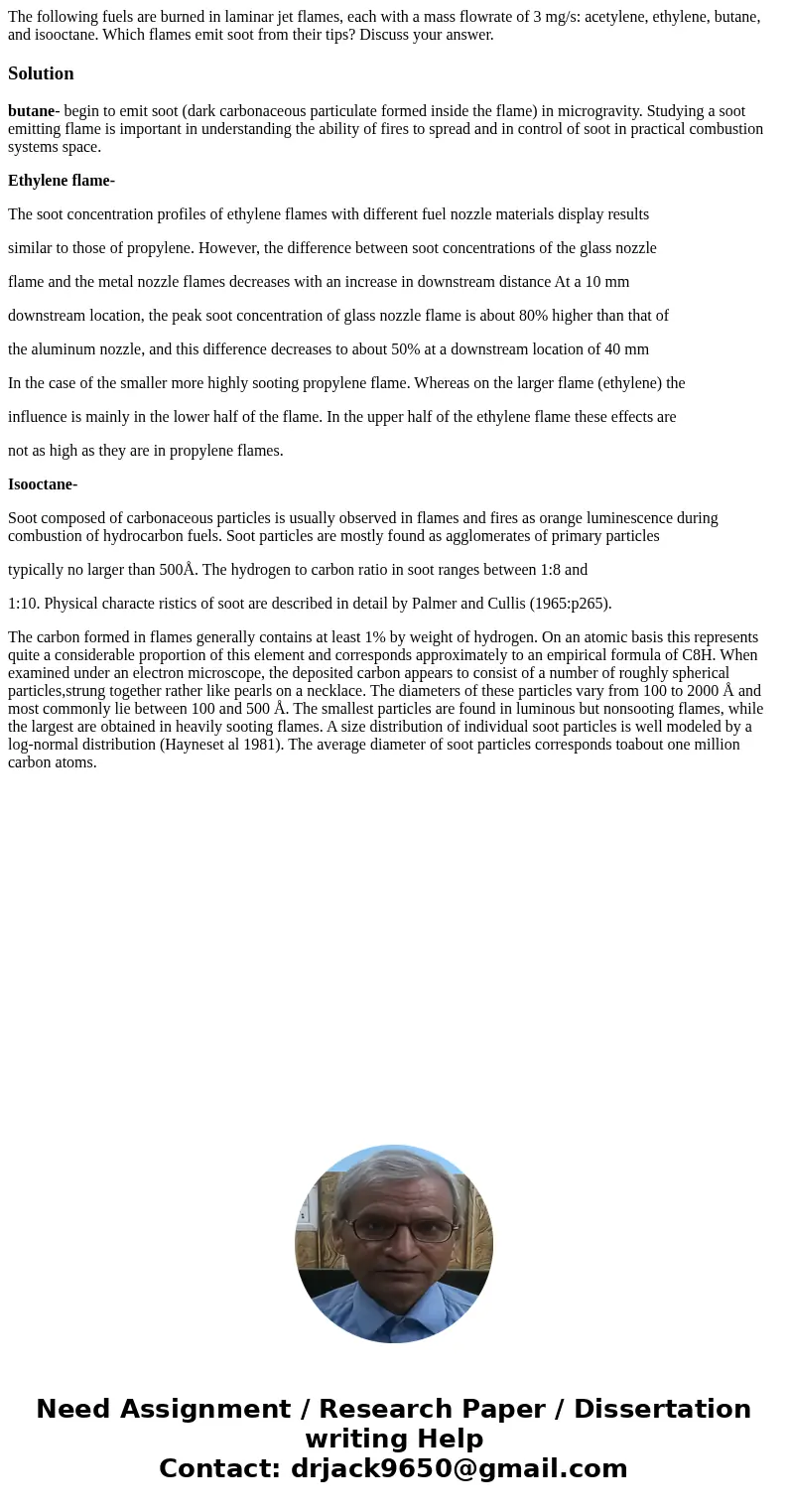The following fuels are burned in laminar jet flames each wi
Solution
butane- begin to emit soot (dark carbonaceous particulate formed inside the flame) in microgravity. Studying a soot emitting flame is important in understanding the ability of fires to spread and in control of soot in practical combustion systems space.
Ethylene flame-
The soot concentration profiles of ethylene flames with different fuel nozzle materials display results
similar to those of propylene. However, the difference between soot concentrations of the glass nozzle
flame and the metal nozzle flames decreases with an increase in downstream distance At a 10 mm
downstream location, the peak soot concentration of glass nozzle flame is about 80% higher than that of
the aluminum nozzle, and this difference decreases to about 50% at a downstream location of 40 mm
In the case of the smaller more highly sooting propylene flame. Whereas on the larger flame (ethylene) the
influence is mainly in the lower half of the flame. In the upper half of the ethylene flame these effects are
not as high as they are in propylene flames.
Isooctane-
Soot composed of carbonaceous particles is usually observed in flames and fires as orange luminescence during combustion of hydrocarbon fuels. Soot particles are mostly found as agglomerates of primary particles
typically no larger than 500Å. The hydrogen to carbon ratio in soot ranges between 1:8 and
1:10. Physical characte ristics of soot are described in detail by Palmer and Cullis (1965:p265).
The carbon formed in flames generally contains at least 1% by weight of hydrogen. On an atomic basis this represents quite a considerable proportion of this element and corresponds approximately to an empirical formula of C8H. When examined under an electron microscope, the deposited carbon appears to consist of a number of roughly spherical particles,strung together rather like pearls on a necklace. The diameters of these particles vary from 100 to 2000 Å and most commonly lie between 100 and 500 Å. The smallest particles are found in luminous but nonsooting flames, while the largest are obtained in heavily sooting flames. A size distribution of individual soot particles is well modeled by a log-normal distribution (Hayneset al 1981). The average diameter of soot particles corresponds toabout one million carbon atoms.

 Homework Sourse
Homework Sourse